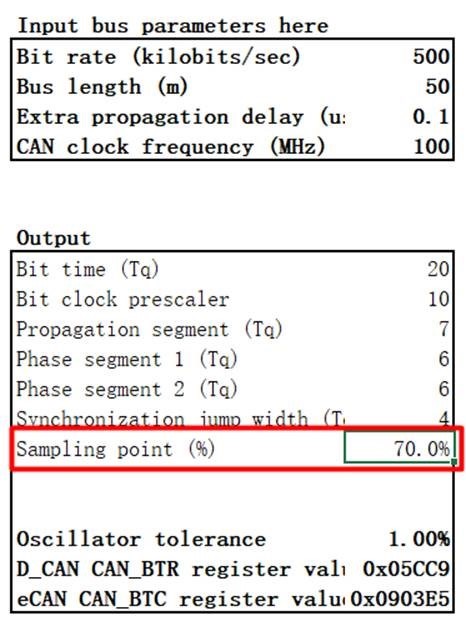Hi expert,
My customer is configurationg CAN on 100M F280049 device. There targeting baurd rate is 500k/bits.
They get bit timing configuration from excel calculation sheet, result shown below:
Tseg1 = 13
Tseg2 = 6
SJW = 4
BPR = 10
Oscillator tolerance: df = 1.00%
They also worked out another set of configuration:
Tseg1 = 5
Tseg2 = 4
SJW = 2
BPR = 20
Oscillator tolerance: df = 1.587%
May I know if it will make a difference between these two?
How could I understand a Oscillator tolerance? How do I know how much it should be? (smaller the better?)
BTW, what is sampling rate here?
Thanks
Sheldon


